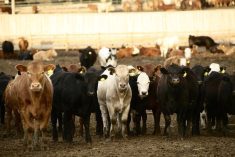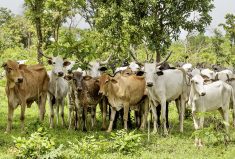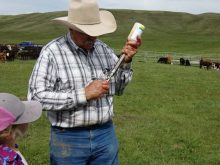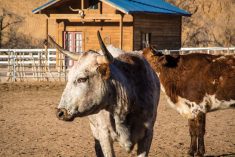Johne’s is a sneaky disease you won’t notice until it is already well established in a herd but a group in Saskatchewan Agriculture is attempting to bring it out into the open. The catch is they can’t do it alone. They need help.
Wendy Wilkins, DVM, PhD, with Saskatchewan Agriculture, says the Provincial Johne’s Screening and Control Program is open to all purebred beef producers in Saskatchewan. “We are targeting purebred breeders because Johne’s is primarily spread from herd to herd by the introduction of infected animals, ” she says.
Read Also
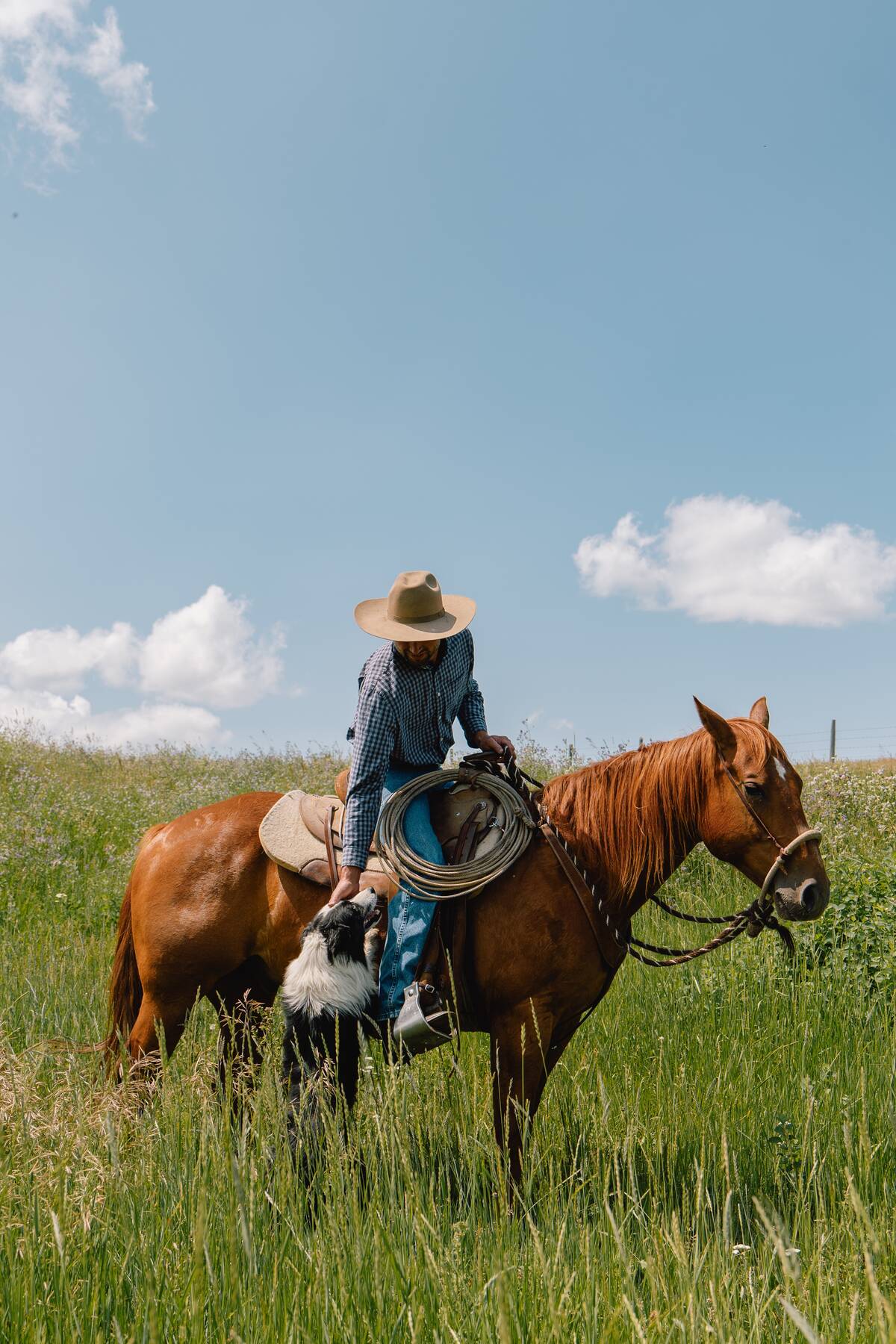
Regenerative ranching sees Alberta family through three decades of ups and downs
Alberta ranchers have found regenerative ranching key to surviving ups and downs of the business
“I talked recently with some producers and this is how they believe they got Johne’s in their herds — by buying a new bull. If you want to make sure that you are not bringing Johne’s into your herd, make sure you are buying bulls from a known source,” says Wilkins. Purebred breeders who are testing for Johne’s would be a safer source than breeders who don’t.
This is a difficult disease to detect since the symptoms — weight loss in spite of good appetite, and diarrhea — generally don’t show up until an animal has been infected for many years, and the tests we currently have don’t pick up the infection right away.
- More from the Canadian Cattlemen: Rapid Johne’s test finds favour in Australia
“Animals typically get infected as calves, usually before six months of age. The bacteria are essentially dormant in their bodies for years. Testing has caught it in some young animals, but usually it’s the older animals that show positive on tests. We don’t recommend testing any cattle under two years of age, since they won’t show positive that young, even if they are infected,” she explains.
“The older they are, the more likely they will test positive if they do have the disease. We recommend that purebred herds be tested, even though we can’t certify a herd as being free of this disease. That doesn’t mean producers can’t take steps to make sure they don’t have Johne’s in their own herd and do their utmost to keep it out of their herd,” says Wilkins.
“Under the current program we do a blood test on all animals in the herd that are over two years of age. The tests are not perfect, but may pick it up in some of the older animals. Another way to test is to do PCR or culture on feces, though these tests are not covered under the provincial Johne’s program. Neither one of those tests is perfect either. The fecal test checks for the actual bacteria, whereas the blood test detects an immune response (if the animal was exposed to the bacteria). A cow can have an immune response and not be shedding bacteria in her feces. Also, a cow can be shedding bacteria and not have an immune response.”
It would be ideal if a person could do both tests because that can tell you more than either test alone. “The problem is cost. As a herd test, however, either test will work if you are testing all the animals, because if the whole herd tests negative you can be fairly confident you don’t have the disease. You can’t ever say that a herd is Johne’s free, because the tests aren’t perfect, but if all the tests are negative there is a good chance you don’t have it.”
On the other hand, if you get any positive tests in a whole-herd testing, you can be fairly confident that you do have Johne’s. “So, at the herd level, the tests are adequate. For the individual animal, they are not so good, but these are the only tests we have.”
When a few cows test positive to blood tests, the next step depends on how many positives. “If there’s only one positive cow in 100 head, we would want to retest that cow, using the fecal test, just to confirm it. If that comes back positive, the producer must make a management decision regarding what to do with that cow. Typically with any cow that is shedding bacteria we recommend getting rid of that cow as soon as possible because she is spreading it to other animals.”
“Under the provincial program, we also provide up to $500 for the producer to consult with their veterinarian and do a risk assessment and management plan,” she says.
“The producer and veterinarian together should go over the farm management procedures and identify areas that would be risks for spreading Johne’s or introducing Johne’s. The plan is to work on two or three specific areas initially, to reduce those risks.”
You wouldn’t want any shedding cows on your calving grounds, or upstream from the rest of the herd. Animals are usually infected young, picking up bacteria via fecal ingestion from contaminated feed and water or suckling dirty teats.
“Don’t be calving in a pen where you’ve had sick animals, or even on the winter feeding ground where there’s buildup of manure. This all applies to disease prevention, in general, and especially Johne’s,” adds Wilkins.
Finding the disease is only the first step, getting rid of it is the hard part. “We’re looking at five to 10 years of commitment to accomplish this,” she says.
- More from the Canadian Cattlemen: Expect decreased production
“Customers want to have confidence in their seedstock supplier. If the purebred breeder is seen to be proactive in preventing Johne’s, buyers will have more confidence.”
It’s tempting to avoid the issue altogether but Wilkins says that’s the worst way to deal with it. If it’s there and they don’t do anything about it, this disease will only infect more and more animals in the herd.
“This is something the industry has struggled with for years — the resistance by producers in general to acknowledge and deal with this disease. It’s often below the radar. Stockmen may see reduced production but not realize they have Johne’s until an animal gets sick and dies. Then the rationale is often, ‘It’s only one cow, and I can deal with that.’ By that time, however, it’s spread through the herd. It is easier to become concerned about something that is very obvious, and Johne’s is not very obvious,” says Wilkins.
The anxiety is even greater for purebred breeders who may fear the mere mention of Johne’s will scare off customers.
For many years, beef producers thought Johne’s was a dairy cattle disease. “For a while this may have been true. But over the years, dairy steers or cull cows have wound up in beef production. This isn’t such a common practice anymore, but it is one of the ways Johne’s could have entered some beef herds.”
“Johne’s is still at low levels in beef herds, compared to dairy cattle. The most recent studies show that it occurs in about one to maybe eight per cent of beef herds, depending on the region. This is fairly low incidence, but if it is not controlled it will only grow,” says Wilkins.
The Saskatchewan Stock Growers Association (SSGA) administers the provincial screening control program. For more information call 306-757-8523.
To those living in other provinces Wilkins suggests they contact their own cattlemen’s association or provincial agriculture department.
“There have been some changes over the past year, with the rollout of Growing Forward Two funding,” she says. Many of the previous Johne’s programs were done with Growing Forward One money, and those programs expired with the expiration of Growing Forward One.
“As always, their own veterinarian is their best resource for disease control, including Johne’s.”




